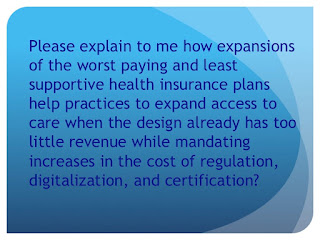The Ultimate Shared Principles for Primary Care and for Most Americans

The Shared Principles documents have attracted much primary care attention. Primary care associations are signing up to support the principles. These are principles that have existed for generations of general practice and family medicine physicians. They are good principles as with other areas supported by such associations. But it is important to remember that the power for primary care principles is the financial design. Each of the primary care principles requires a better financial design. Each principle has long been compromised by the Triple Threat. The primary care Triple Threat is too little revenue, acceleration of cost of delivery, and complexity increasing in multiple dimensions (practice, population, community, higher functions). This limits what we can invest in practice, patients, team members, and the people of our communities. The same Triple Threat is taking out mental health and general surgical specialties - thrusting even more burden upon the family ...


